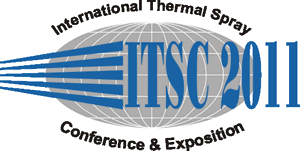
|
3072 |
|
Effect of bond coat material and heat treatment on adhesion strength and characteristics of thermal barrier coating system with CGDS, HVOF and APS techniques |
|
Nahed El Mahallawy / The German University in Cairo, Egypt Ibrahim El Araby / The German University in Cairo, Egypt Thomas Lampke/ TU Chemnitz, Germany Thomas Grund / TU Chemnitz, Germany Abdoulla Karaoglanli / Bartin University, Turkey |
|
The most recent increase in turbine entry temperature (TET) can be obtained by the use of Thermal Barrier Coatings (TBCs) on cooled hot section components. The TBC systems comprise Ni-based super-alloy substrates which provide certain mechanical properties and blade geometries consisting of a ceramic top coats applied to metallic bond coats with low thermal conductivity resulting in a significant temperature drop the coating. The bond coat provides oxidation resistance and adherence of the through top coat to the substrate. In this study different new bond coat layers were applied on carbon steel substrates. Al-12%Si and Al 99% were deposited by cold gas dynamic spray technique (CGDS) while Ni-5%Al layer was deposited by high velocity oxy fuel technique (HVOF). Top layer is always yttria stabilized zirconia (YSZ) using atmospheric plasma spray technique (APS). Heat treatment was performed on the samples under controlled atmosphere for 15 hours. The microstructure and micro hardness of as sprayed and after heat treatment samples were investigated. Adhesion strength for top coat / bond coat interface and bond coat / substrate interface were investigated and evaluated. The residual stresses for as sprayed and after heat treatment was estimated by XRD measurement on the top coat layer with different bond coat material. The results indicate that the adhesion strength either for as sprayed or after heat treatment was enhanced using this new bond coat materials compared to the traditionally as deposited Ni Co Cr Al Y bond coat material |